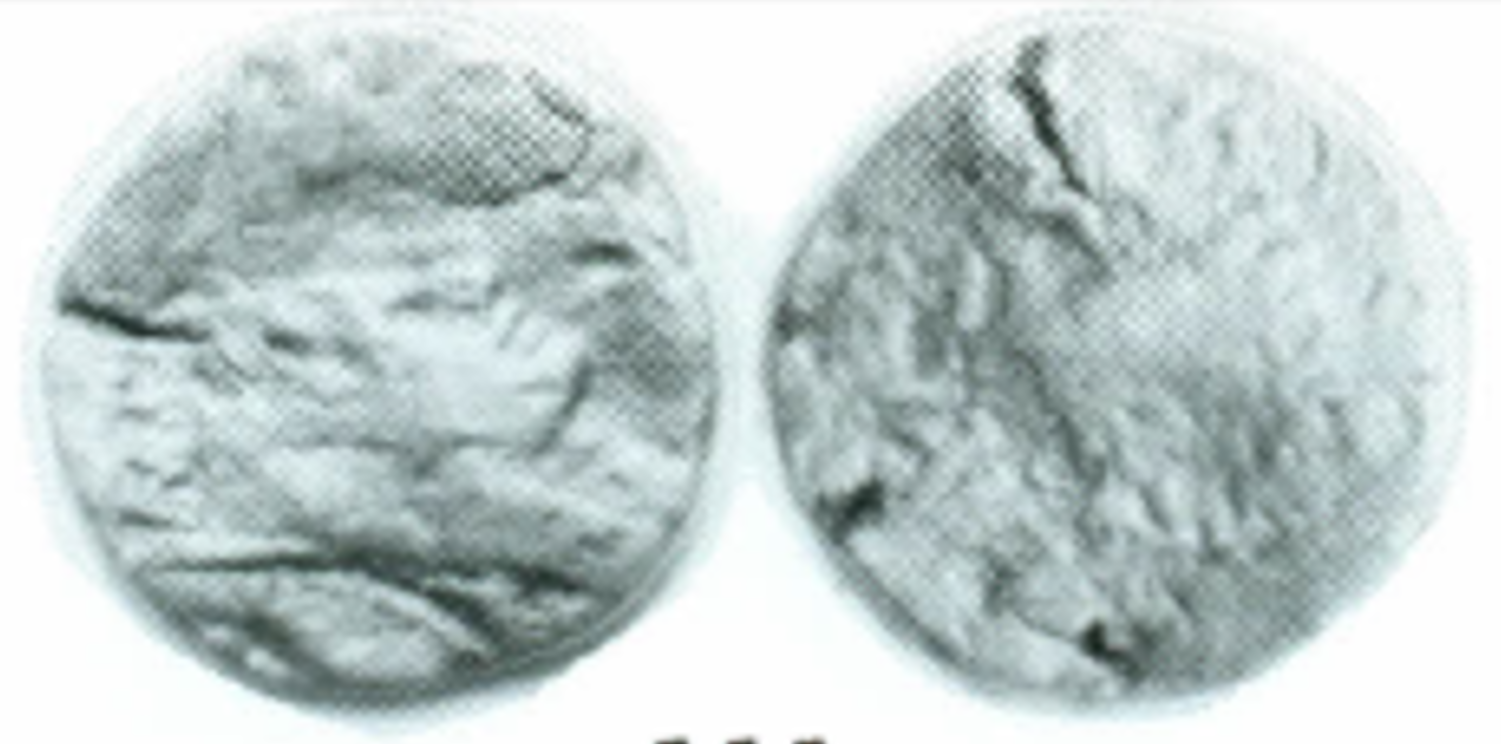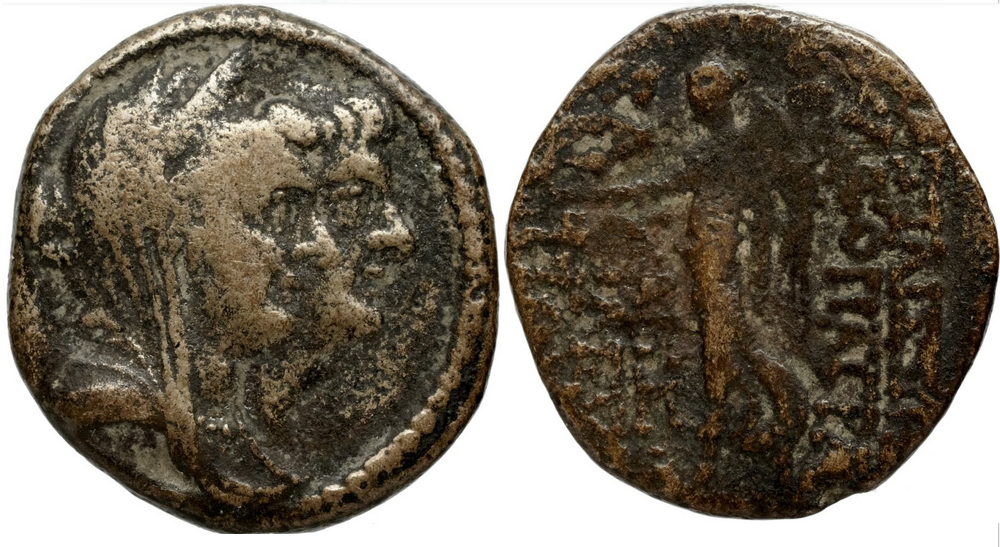70 BCE - 69 BCE | BAΣIΛEΩΣ TIΓPANOY
Overstriking coin
Tigranocerta_over_uncertain_mint_(Nercessian_1996,_111).png
Overstruck variety
Uncertain_mint_under_Antiochus_VIII_Antiochus-Cleopatra_Nike.png
[1]
Description
| ObverseInscription or printing placed on the obverse.:
|
Bust of Tigranes II to right, wearing Armenian tiara decorated with a star between two eagles and tied with a diadem, drapery on shoulders. Border of dots.
|
ReverseInscription or printing placed on the reverse.:
|
BAΣIΛEΩΣ TIΓPANOY Horse left. Above, letters. Below, ΔΗΜ.
|
Mint and issuing power
Chronology
| FromIdentifies the initial date in a range assigned in a numismatic context. 70 BCE toIdentifies the final date in a range assigned in a numismatic context.. 69 BCE
|
Hellenistic 323-30 BC  periodTime period of the numismatic object. periodTime period of the numismatic object.
|
Physical description
MetalThe physical material (usually metal) from which an object is made.: Bronze 
|
WeightWeight of the numismatic object (in grams). in grams: 5.395.39 g <br />5,390 mg <br />
|
DenominationTerm indicating the value of a numismatic object. Examples: tetradrachm, chalkous, denarius.: tetrachalkon 
|
|
| DiameterDescribes diameter of an object (in mm).: 2020 mm <br />2 cm <br />
|
|
References
Description
| ObverseInscription or printing placed on the obverse.:
|
Jugate heads of Antiochos, wearing diadem and Cleopatra, wearing diadem, stephane and veil, right.
|
ReverseInscription or printing placed on the reverse.:
|
ΒΑΣΙΛΙΣΣΗΣ ΚΛΕΟΠΑΤΡΑΣ ΘΕΑΣ ΚΑΙ ΒΑΣΙΛΕΩΣ ΑΝΤΙΟΧΟΥ Nike left, holding wreath.
|
Mint and issuing power
Chronology
| FromIdentifies the initial date in a range assigned in a numismatic context. 125 BCE toIdentifies the final date in a range assigned in a numismatic context.. 125 BCE
|
Hellenistic 323-30 BC  periodTime period of the numismatic object. periodTime period of the numismatic object.
|
Physical description
References
| Frequency of overstrikesFrequency of overstrikes:
|
|
Level of confidenceLevel of confidence of the identification:
|
|
| RemarksRemarks:
|
"Obv.: above and below, letters and date (visible on obverse: border of dots; rev.: (visible on reverse: In left field, H. Below, star, upper part of Nike)"
|
References
- ^ Nercessian, Yeghia T. (1995), Armenian Coins and Their Values, Armenian Numismatic Society Special Publication 8, Los Angeles.
- ^ Kovacs, Frank (2016), Armenian coinage in the classical period, Classical Numismatic Studies 10, Lancaster, 83 p.
- ^ Gardner, Percy (1878), A Catalogue of the Greek coins in the British Museum. vol. XXII : The Seleucid kings of Syria, London, The Trustees, p. 126, pl. 28.


